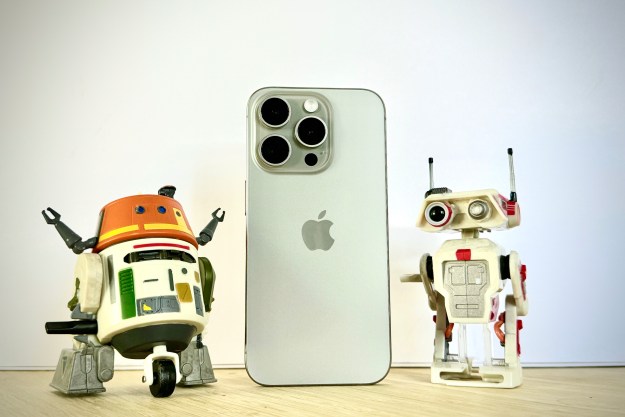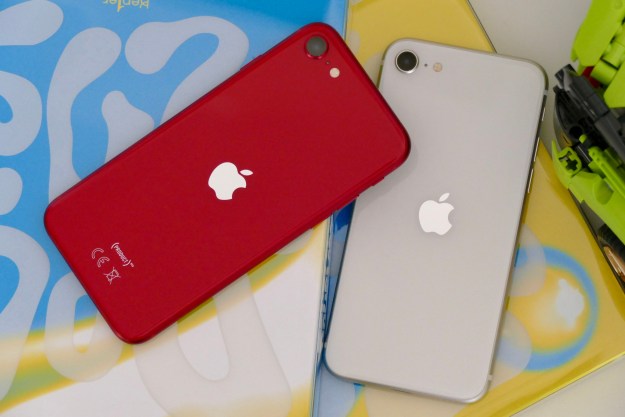There’s a big difference between the iPhone 6 and the Nokia Lumia Icon on paper, but there has always been a performance gap between the iPhone and other smartphones when you just look at the numbers. It’s the features list, and the fact that every piece of Apple hardware is built to be optimized around iOS, that makes the difference. When we reviewed the Nokia Lumia Icon, we found that although the hardware was more than capable of doing what we wanted, Windows 8 is still in its early stages, and doesn’t have the same high level of compatibility or stability that Android and iOS have achieved over the last few years.
|
Apple iPhone 6 |
Nokia Lumia Icon  |
|
| Size | 5.44 x 2.64 x .27 inches | 5.39 x 2.79 x .39 inches |
| Weight | 4.55 ounces | 5.86 ounces |
| Screen | 4.7-inch IPS | 5-inch OLED |
| Resolution | 1334 x 750 pixels | 1920 x 1080 pixels |
| OS | iOS 8 | Windows 8 GDR3 |
| Storage | 16, 64, 128 GB | 32 GB |
| SD Card Slot | No | No |
| Processor | Apple 64-bit, A8 chip | Quad-core Snapdragon 800 |
| RAM | 1 GB | 2GB |
| Connectivity | 4G LTE, Wi-Fi (802.11ac) | Wi-Fi, 4G LTE, HSPA+, NFC |
| Camera | 8MP Rear, 1.2MP Front | 20MP Rear, 1.2MP Front |
| Bluetooth | 4.0 | 4.0 |
| Fingerprint sensor | TouchID | No |
| Water Resistant | Yes | No |
| Battery | TBA, 14 hours of talk time | 2420mAh, 16.4 hours of talk time |
| Charger | Lightning | Micro USB |
| Marketplace | Apple App Store | App for Windows |
| Avg. Price | $650, $200 with a two-year contract | $500, $100 with a two-year contract |
| Availability | September 19 on AT&T, Verizon, Sprint, T-Mobile | Now on Verizon |
| DT Review | 4.5 out of 5 | 3.5 out of 5 |
Power
On paper, both of these smartphones are equipped with the newest technology when it comes to processing and memory. The Snapdragon 800 is one of highest performance processors produced by Qualcomm, and while we don’t know much about Apple’s newest A8 system, it’s stated as having 50-percent better performance than the A7, with half of the power draw. The key to the iPhone has always been the close integration of hardware and software, which tends to increase the optimization of the seemingly lower-end hardware. From what we’ve seen, the new Metal interface has allowed developers to get even closer to the kind of graphical and hardware tools that desktop programmers do, a change for the normally very closed iOS ecosystem, and the difference is clear. The high-resolution display looks beautiful, and the UI’s careful development and optimization make iOS a clear winner over the still-infantile Windows 8.
Design
Apple’s design concepts have always been based around clean lines and UI, and the newest versions of the phone adopt the rounded edges from the recently updated iPad line. Apple has also expanded the screen from the iPhone 5 by 0.7 inches, which may not seem like a lot until it’s actually in your hand. The Retina Display is designed with such a high pixel density that the human eye can’t differentiate individual pixels, but at only 1334 x 750 resolution, the slightly larger 1080p screen on the Lumia Icon has a significantly higher PPI, which may make it appear a lot more detailed. A lot of the choice between operating system comes down to how invested you are in the Apple app store or the Apps for Windows marketplace, but with a huge number of compatible apps for iOS, and the huge amount of time spent optimizing the UI, it’s hard to make a convincing argument to switch from Android or Apple to the Windows 8 mobile environment.
Camera
The Lumia Icon touts Carl Zeiss optics in in camera, but while it is advertised as having a 20-megapixel sensor, it’s actually a 16-megapixel sensor that takes a full-resolution and 5-megapixel sensor for a smaller version of all your photos. Both phones have rear cameras capable of shooting 1080p video, but while the Nokia has a higher quality sensor, the iPhone 6 has slow-motion video capture up to 240 frames per second. Carl Zeiss optics may seem like it would make a big difference, but we found in our review that the higher-megapixel camera couldn’t match the consistency of the sensor in the iPhone 5s.
Conclusion
When it comes to picking a smartphone, there are a lot of intangibles besides the clockspeed of the processor and the number of gigabytes of RAM. In this case, the positive feature set and integration with the Apple ecosystem make the iPhone much greater than the sum of its parts. Our review of the Nokia Lumia Icon found that while the numbers look great, the phone left a lot to be desired, and it was clear that the Windows 8 mobile operating system is still at a stage that most Android and iOS users won’t be convinced to make the switch. If you’re looking at getting a new smartphone, it’s worth waiting for September 19 when the iPhone 6 drops, to see how well it works once it’s in consumers’ hands – especially if you’re considering a Windows phone.
Related: iPhone 6 vs. iPhone 6 Plus.
Related: iPhone 6 vs. Galaxy S5.
Related: iPhone 6 vs. Fire Phone.
Editors' Recommendations
- This one Apple Fitness feature completely changed how I exercise
- Nomad’s new iPhone case and Apple Watch band may be its coolest yet
- Best iPhone deals: Save on iPhone 15, iPhone 15 Pro Max and more
- How to find your lost phone (tips for iPhone and Android)
- iPhone 16: news, rumored price, release date, and more



